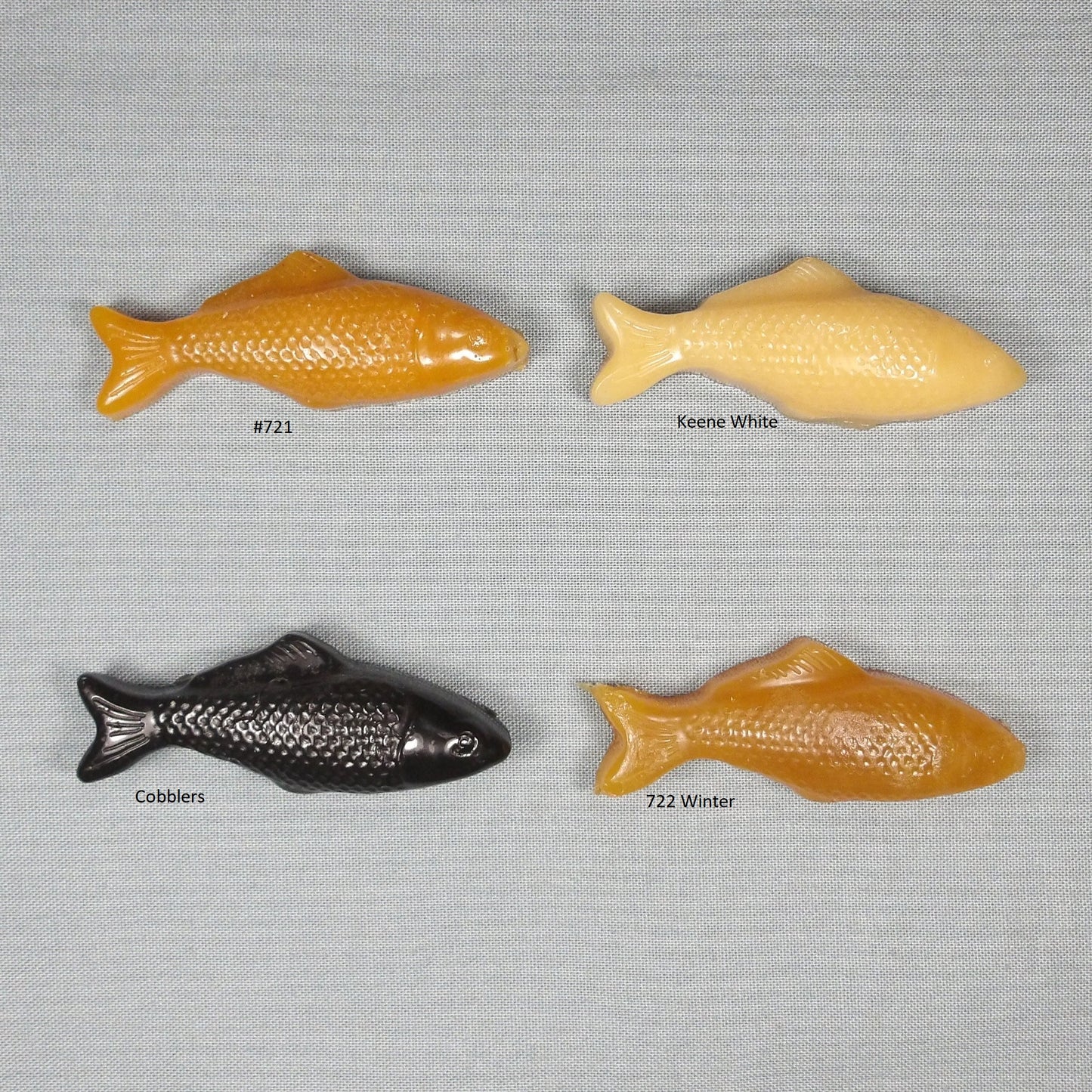Flywaxx Tying Wax
Flywaxx Tying Wax
SHHHH! The secret sauce to many a good fly is fly tying wax – this is not your sticky, mess making dubbing wax!!!! Historically fly-tying wax was used for Northern Fly-tying traditions but tyers across all styles have come to learn the benefits of using tying wax. Traditionally these were used in preserving and water proofing silk threads; often, these waxes are used to create stronger tie in points with less thread wraps and more secure finished heads. Although different than dubbing wax, these waxes will also help with dubbing. To apply, keep a small pea size ball of wax close to hand. The wax has some unique properties in that it is hard at room temperature (like a rock in cold water) and will probably break your thread if you try and wax it as is. Warm the wax ball by rolling in your fingers momentarily. Often tyers will apply the ball of wax to their non-dominant pointer finger knuckle for quick tying; your body heat will keep the wax pliable and ready for quick use. Utilize finger pressure and draw the desired length of thread across the wax to apply a coating of wax to the thread.
721 Wax: medium tack, medium hardness. This is the work horse wax for traditional tying. Apply to your thread prior to tying in slippery materials (squirrel tail) or feather rachises that want to spin; less thread wraps and greater security. Wax your thread prior to your whip finish, the friction of pulling the knot through will melt the wax enough to seal it all together preventing knots from coming undone. Time to up your tying game.
722 Winter Wax: soft, high tack wax, also called winter wax. Historically this, was used during cold seasons as it was the easiest to soften. If you find it a little too tacky, just place it in the freezer for 5 minutes (this can aid in getting it out of the bag).
Cobblers Wax: as described by the last of the Grand Masters, T.E. Pryce-Tannatt: “As to wax, the ordinary cobbler’s is I think, the best. “
Slightly tackier than the 721 and traditionally used to alter the thread color. Make your primrose silk the perfect Greenwell Glory color. Skilled tyers can wax one side of the thread and thereby produce a ribbed body effect when winding the silk on their irons. Use it to make beautifully shaped heads on your stunner ties. Traditional tyers will find this to be an essential.
Keene White Wax: as described by the great flymph/wet fly master James Leisenring, “Waxes for fly tying are like hooks - there are all kinds. The wax which I have found to be entirely satisfactory is made according to an old recipe of L. Harrington Keene.”
Moderately tacky, white wax softens readily in the hand for use. In 1898, L. Harrington Keene first described it in the third edition of "Fly Fishing and Fly Tying;” James Leisenring and Vernon Hidy in their 1971 book " The Art of Tying the Wet Fly & Fishing the Flymph,” preferred and recommended this wax of for creating the bodies of wet flies and flymphs. White wax is much less likely to darken or alter the color of lightly colored tying silk or body materials as more traditional cobblers wax does. Keep a small amount of wax, roughly the size of a pea, at the tying station for use. The remainder should be stored sealed in the freezer. Stored this way will prolong the life of the unused portion of the wax.
Share

